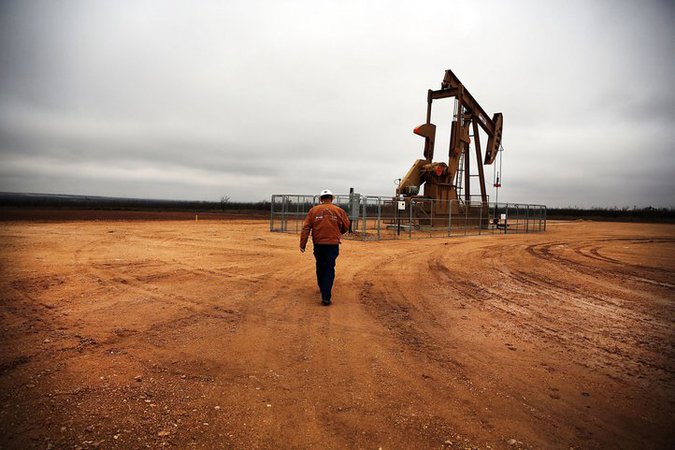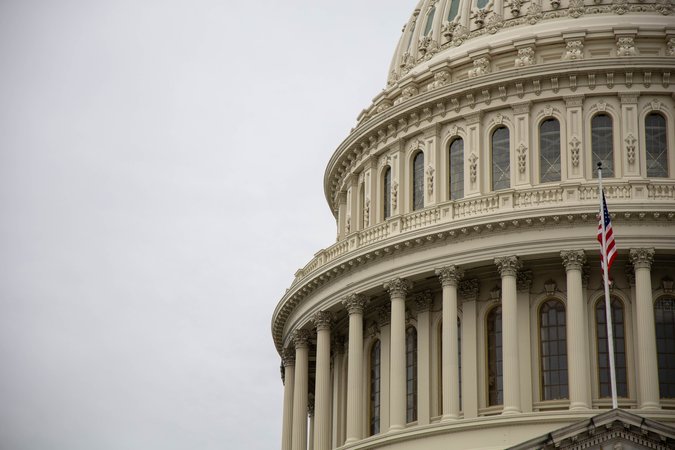Carbon Pricing 106: Effects on Employment
This explainer draws from the literature on the employment impacts of environmental policy to answer an important policy question: how do (or will) carbon pricing policies affect employment?
Carbon pricing is a powerful tool for addressing climate change that increases the price of carbon dioxide-intensive goods and services relative to other goods and services and utilizes market forces to decrease emissions covered by the policy. A central factor for policymakers as they consider carbon pricing policies (and other policies more generally) is the impact on jobs. Opponents often argue that carbon pricing negatively impacts the labor market and leads to job loss. However, the true effects of carbon pricing on the labor market are far more complex than a simple accounting procedure; one critical lesson is that jobs tend to be reallocated rather than lost entirely. This explainer draws from the literature on the employment impacts of environmental policy to answer an important policy question: how do (or will) carbon pricing policies affect employment?
The COVID-19 pandemic has significantly affected employment across the country, bringing the largest spikes in unemployment since the Great Depression. This explainer considers the impact of a carbon price on employment during periods of pre-pandemic employment levels and fluctuations. We will continue to reevaluate our analysis as employment rebounds in the coming months and years.
Reallocation vs. Net Employment Change
One of the clear takeaways from the literature on employment effects of environmental policy, and carbon pricing specifically, is that policies tend to cause a reallocation of employment (a shift of jobs from one sector to another) rather than net gains or losses in jobs.
New research from British Columbia, which has had a carbon tax since 2008, provides strong evidence that a revenue-neutral carbon tax causes job reallocation rather than substantial net change in jobs. Locally-operated businesses actually increased their employment at the expense of large trade exposed manufacturing firms. This evidence is also consistent with model projections on the employment effects of a US carbon price.
These findings suggest that many of the jobs lost in polluting industries due to a price on carbon, such as jobs at fossil-fuel power plants, are replaced by new jobs in non-polluting industries, such as renewable energy plants or service industries. Therefore, economy-wide unemployment levels are not expected to be significantly affected by carbon prices and the changes that do occur are expected to be insignificant relative to typical business-cycle fluctuations in the labor market.
What We Know: Lessons from the Literature
The US does not have a comprehensive carbon pricing policy in place from which we can empirically estimate the impact of carbon pricing on employment across sectors. This means economists must rely on estimates of the impacts of other environmental policies, use economic models, or apply estimates from carbon pricing policies in other jurisdictions to say something intelligent about how carbon pricing will affect employment. Here are some lessons for US carbon pricing.
Modeling Employment Impacts Is Hard
There are many types of economic models, but the most popular type of economic model used to evaluate climate policy are computable general equilibrium (CGE) models. Until recently, most CGE models used to evaluate policy have been “full-employment models” that fail to capture key aspects of the labor market, such as unemployment, job search, and the distinction between the number of workers and hours per worker. Perhaps unsurprisingly, new research that utilizes more sophisticated labor market models suggest that these types of models greatly overestimate long-run changes in the number of jobs in the economy.
These more sophisticated models have improved our understanding of the medium to long-run impacts of climate policy on jobs. However, even these types of models require significant improvements to accurately capture the short-run labor market dynamics of carbon pricing policies.
Partial Equilibrium Studies Warrant Skepticism
Environmental policies that affect employment are likely to cause employment effects not only in regulated industries but in unregulated industries as well. This is called a spillover. For example, if a fossil-fuel plant closes and the former workers spend less money at local businesses, those businesses may have to lay off employees: this is an example of negative spillover. However, if the plant is replaced by a renewable energy plant that then hires new staff, that is an example of positive spillover.
There is a robust literature that uses partial equilibrium studies to evaluate the impacts of existing environmental regulations on employment in regulated studies. By definition, partial equilibrium studies only consider the impacts of a policy on one sector and ignore spillover effects. Because they assume the effect of regulation on other industries is zero, they are unable to capture the overall effect of the policy on employment levels across the economy. As a result, these types of studies are not particularly relevant for predicting the employment impacts of carbon pricing.
Revenue Use Matters
The literature on carbon pricing has emphasized the importance of revenue use on a variety of economic outcomes (also known as the revenue recycling method; learn more about revenue use). Modeling evidence suggests that this holds true for employment as well. If the revenue from a carbon tax is used to finance payroll tax cuts, the overall impact of that carbon tax on employment will be less than if the revenue is used for lump-sum rebates. Other aspects of policy design will also affect the employment effects of a carbon price (intuitively, as the level of the price increases, so will the amount of job reallocation), but the revenue use is one of the most critical factors to consider.
Increased Separations vs. Decreased Hiring
A firm that “loses” jobs in response to a carbon price may do so in two ways. The firm can lay off or discharge workers, or it can reduce (or stop) the hiring of new workers and allow for natural attrition in its workforce (2.3 percent of all workers voluntarily left their jobs in January 2020). The welfare impacts of increased separations are obvious: workers lose their primary income and often require unemployment benefits to help mitigate their loss of income. A decrease in hiring also has important welfare impacts for workers, but in different and less obvious ways. While increased separations tend to affect workers who have worked in a sector for years, decreases in hiring are more likely to affect those who are newer to the workforce. The loss of opportunities in one sector may lead these younger workers into other, potentially less lucrative sectors.
Questions and Considerations for Ongoing Research
While politicians frequently concentrate on the simple metrics of jobs created or lost, there are many other factors that determine the actual economic impacts of carbon pricing on workers. These factors may play a key role in the political feasibility of a carbon price and the impacts of the policy on the overall economy. However, the exact effects of these factors, and how to incorporate them into modeling, is yet unclear; further research is required to find out.
Increased Separations vs. Decreased Hiring
The distinction between increased separations and decreased hiring rates can be difficult to account for when measuring and modeling the impact of a policy on employment., While it is easy to identify workers who involuntarily lose their jobs due to a policy, it is less obvious which workers are affected by reduced hiring. The political ramifications of policy implementation will probably differ dramatically based on how firms choose to adjust. Current research suggests most industries could adjust to a carbon price with decreased hiring, though further research is necessary to test the robustness of this result.
Distributional Effects
Reallocation of jobs across sectors can benefit some workers while hurting others; in essence, it creates winners and losers. The workers who lose jobs in negatively affected industries may not be the same workers who are hired in industries that increase hiring, especially in the short run. This creates distributional issues: who wins and who loses becomes important, especially politically.
The costs of reallocation may affect different types of workers in different ways. When workers lose jobs, it commonly takes time for them to find new ones and the new ones may be lower paying than their previous job. This negatively impacts those individuals—there are “substantial, persistent effects” on those who lose their jobs—and can have consequences for society as a whole. There may be other differences in how workers are affected as well. For example, low-income workers may find it harder to move sectors than higher income workers (if significant education or a geographic move is needed). More research is required to measure the societal effects of the cost of reallocation and to predict what types of workers are most affected by reallocation.
Job Quality Effects
There is a worry among some groups that many of the jobs workers may lose due to environmental policy are relatively high-paying, require relatively little formal education, and are generally desirable to workers. Meanwhile, new jobs created in response to the carbon price may pay less, require more education or training, and be generally less desirable. However, it’s not yet clear to what extent this would occur and is an important question to address in future research.
Geographic Effects
Industries are often geographically concentrated—especially fossil-fuel industries. As a result, sectoral job reallocation could lead to different changes in net jobs in different regions, with some regions gaining jobs and some regions losing jobs, even if the net effect for the United States as a whole is small. Again, more research is needed to measure the impacts of carbon pricing on employment in different regions.
Short-Run Dynamics
The US labor market is particularly dynamic. For example, in January 2020 there were 5.8 million jobs filled (or 3.8 percent of the workforce) and 5.6 million separations (including both quits and layoffs). Economic models can replicate these dynamic features of the labor market, but it is particularly difficult to include some real-world factors (mortgages, job and skill mismatch, liquidity constraints, etcetera) that prevent certain types of workers from transitioning from one type of job to another. Again, more research is required to predict the short-run impacts of carbon pricing on the labor market.
Conclusion
Policymakers often focus on the impact of policy on numbers of jobs and overall levels of employment, especially when it comes to environmental policy. However, there are several factors that affect a policy’s employment impacts beyond these metrics. While carbon pricing is often derided as a “job killing” policy approach, economic research suggests most job losses in affected industries are offset by job gains in other industries. This reallocation, and the other factors discussed in this explainer, are critical to consider when evaluating carbon pricing and other environmental policy.





